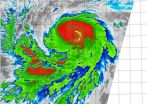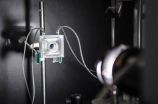(Press-News.org) A simple change in the wording of a traffic sign - from "Share the Road" to "Bicycles May Use Full Lane" - could help clarify the rules of the road for bicyclists and motorists, according to a North Carolina State University study.
"'Share the Road' signs are common but what that means in terms of how drivers and bicycle riders should interact can be ambiguous," says George Hess, natural resources professor and co-author of the study in PLOS One. Some bicyclists complain that motorists consider them to be in the way, while some motorists accuse bicyclists of hogging the road.
Misunderstandings on the road can be deadly. "Personal safety probably ranks as the most important factor deterring people from commuting by bicycle, so anything we can do to improve safety, and perceptions of safety, is incredibly important," says co-author Nils Peterson, also a natural resources faculty member.
In fact, traffic regulations in all 50 states treat bicycles as vehicles with essentially the same rights to be in the travel lane as cars, Hess says.
The researchers administered a Web-based survey, using Twitter to recruit 1,800 survey takers. They compared whether three traffic control methods communicated the message that bicyclists are permitted in the center of the travel lane without having to "get out of the way" to allow motorists to pass without changing lanes.
Hess and Peterson found that survey takers who saw a "Bicycle May Use Full Lane" sign were more likely to respond in ways that recognized bicyclists' right to use the road than those who saw no sign. The effect was particularly strong for people who bicycled 10 or fewer miles per week or commuted primarily by car.
In contrast, those who saw a traditional "Share the Road" sign with a bicycle image showed no significant difference in response from those who saw no sign at all.
Those who saw a third option, shared lane markings of bicycle images painted on the pavement, were more likely to recognize bicyclists' right to use the roadway, but not as consistently as those who saw "Bicycles May Use Full Lane" signs.
"'Bicycles May Use Full Lane,'" is a pretty clear winner," Hess says. He points out that Delaware stopped putting up "Share the Road" signs in 2013 because the language appeared to put the onus on bicyclists rather than motorists.
However, the survey showed a gap between traffic knowledge and perceptions of road safety. While 92 percent of survey takers who saw the "Bicycles My Use Full Lane" sign said that it was legal for a bicyclist to use the center of the lane, only 70 percent said it was safe for them to do so.
Hess and Peterson suggest departments of transportation consider replacing "Share the Road" signage with "Bicycles May Use Full Lane" signs, possibly in combination with shared lane markings, particularly in places where lawfully passing within the same lane is not possible.
The researchers would like to do further research with simulations and on-road tests that reflect real-life scenarios.
Hess and Peterson both regularly commute to work by bicycle. Safely increasing the use of bicycles for transportation in the U.S. could bring a multitude of benefits, including greater mobility among disadvantaged groups, improved public health, lower obesity rates, less traffic congestion and reduced greenhouse gas emissions, Peterson says.
"Replacing a personal motor vehicle with a bicycle is the single most environmentally beneficial and personally profitable action most people can ever take," Peterson adds.
INFORMATION:
"Bicycles May Use Full Lane" Signage Communicates US Roadway Rules and Improves Perception of Safety
Authors: George Hess and Nils Peterson, NC State University
Published: Online in PLOS ONE
Abstract: Many global challenges, including obesity, health care costs, and climate change, could be addressed in part by increasing the use of bicycles for transportation. Concern about the safety of bicycling on roadways is frequently cited as a deterrent to increasing bicycle use in the USA. The use of effective signage along roadways might help alleviate these concerns by increasing knowledge about the rights and duties of bicyclists and motorists, ideally reducing crashes. We administered a web-based survey, using Twitter for recruitment, to examine how comprehensibly three US traffic control devices communicated the message that bicyclists are permitted in the center of the travel lane and do not have to "get out of the way" to allow motorists to pass without changing lanes: "Bicycles May Use Full Lane" and "Share the Road" signage, and Shared Lane Markings on the pavement. Each was compared to an unsigned roadway. We also asked respondents whether it was safe for a bicyclist to occupy the center of the travel lane. "Bicycles May Use Full Lane" signage showed notable increases in comprehension among novice bicyclists and private motor vehicle commuters, critical target audiences for efforts to promote bicycling in the USA. Although limited in scope, our survey results are indicative and suggest that Departments of Transportation consider replacing "Share the Road" with "Bicycles May Use Full Lane" signage, possibly combined with Share Lane Markings, if the intent is to increase awareness of roadway rights and responsibilities. Further evaluation through virtual reality simulations and on-road experiments is merited.
Consider the pendulum of a grandfather clock. If you forget to wind it, you will eventually find the pendulum at rest, unmoving. However, this simple observation is only valid at the level of classical physics--the laws and principles that appear to explain the physics of relatively large objects at human scale. However, quantum mechanics, the underlying physical rules that govern the fundamental behavior of matter and light at the atomic scale, state that nothing can quite be completely at rest.
For the first time, a team of Caltech researchers and collaborators has ...
Washington DC - August 28, 2015 - Oysters not only transmit human norovirus; they also serve as a major reservoir for these pathogens, according to research published August 28 in Applied and Environmental Microbiology, a journal of the American Society for Microbiology. "More than 80 percent of human norovirus genotypes were detected in oyster samples or oyster-related outbreaks," said corresponding author Yongjie Wang, PhD.
"The results highlight oysters' important role in the persistence of norovirus in the environment, and its transmission to humans, and they demonstrate ...
NASA-NOAA's Suomi NPP satellite flew over Hurricane Jimena in the Eastern Pacific and saw the strongest thunderstorms building up quickly, especially in the northern quadrant of the storm. Jimena intensified rapidly overnight on August 27 and early August 28 and the National Hurricane Center expects it to become a major hurricane.
The Visible Infrared Imaging Radiometer Suite or VIIRS instrument aboard the satellite provided infrared data of the storm that showed the coldest cloud top temperatures, which indicate the strongest thunderstorms were in Jimena's northern ...
Generating and storing renewable energy, such as solar or wind power, is a key barrier to a clean-energy economy. When the Joint Center for Artificial Photosynthesis (JCAP) was established at Caltech and its partnering institutions in 2010, the U.S. Department of Energy (DOE) Energy Innovation Hub had one main goal: a cost-effective method of producing fuels using only sunlight, water, and carbon dioxide, mimicking the natural process of photosynthesis in plants and storing energy in the form of chemical fuels for use on demand. Over the past five years, researchers at ...
If you think that performing CPR on a person whose heart has stopped is a surefire way to save their life, you may be watching too much TV.
The truth is more depressing than fiction, according to a new study by University of Southern California Davis School of Gerontology researchers. While medical dramas Grey's Anatomy and House show cardiopulmonary resuscitation saving a patient's life nearly 70 percent of the time, the real immediate survival rate is nearly half that - around 37 percent.
Researchers also found another discrepancy between reality and TV: Half of ...
TAMPA, Fla. - Pancreatic cancer is the fourth most common cause of cancer-related death in the United States and has a 5-year survival rate of only 6 percent, which is the lowest rate of all types of cancer according to the American Cancer Society. This low survival rate is partially attributed to the difficulty in detecting pancreatic cancer at an early stage. According to a new 'proof of principle' study published in Aug. 27 issue of Cancer Prevention Research, Moffitt Cancer Center researchers hope to improve pancreatic cancer survival rates by identifying markers in ...
Beach sand contains all kinds of microorganisms, including those that can harm human health. Yet current guidelines are focused exclusively on monitoring the levels of microbes in the water.
Now, an international panel of scientists is recommending monitoring the sand at recreational beaches, to minimize health risks for beachgoers. Their advice is based on the general consensus reached during the international conference "Trends in Environmental Microbiology and Public Health," held in Lisbon Portugal in September 2014.
"Beach sands accumulate contaminants and people ...
A collaboration between biologists and engineers at Monash University has led to the development of a new non-invasive image processing technique to visualise embryo formation. Researchers were able to see, for the first time, the movement of all of the cells in living mammalian embryos as they develop under the microscope. This breakthrough has important implications for IVF (in vitro fertilisation) treatments and pre-implantation genetic diagnosis (PGD). In the future, this approach could help with embryo selection before the embryo is implanted back into the uterus to ...
A German-French team has developed a light-sensitive switch that regulates a protein implicated in the neurobiology of synaptic plasticity. The agent promises to shed new light on the phenomenology of learning, memory and neurodegeneration.
Learning is made possible by the fact that the functional connections between nerve cells in the brain are subject to constant remodeling. As a result of activation-dependent modification of these links ('synaptic plasticity'), circuits that are repeatedly stimulated "learn" to transmit signals ever more efficiently. This process is ...
This news release is available in German.
A new international study shows that 5,000 foetuses in Europe annually are affected by spina bifida and other severe defects on the central nervous system. Seventy per cent of these pregnancies are terminated, while increased mortality and serious diseases affect the children who are born. At least half of the cases can be avoided by adding folic acid to staple foods as is already being done in seventy non-European countries.
A lack of folic acid enrichment in Europe is the cause of several thousand cases of foaetal abnormalities ...

